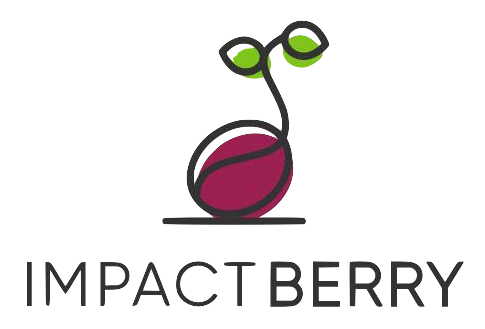From Seed to Cup: The Adventures of a Coffee Bean
The long journey a coffee bean goes on to become part of your morning espresso is full of twists and turns. There’s much more to it than a simple voyage from origin to destination. That’s why we’re going to break it down today in the story of Bean, a honey-processed Arabica coffee bean from Vietnam who travels to Hong Kong to achieve her dream of becoming a French Press coffee.
Prologue: Planting
Bean’s story starts long before she’s even born. Her family tree (literally a Coffea arabica tree) was planted over seven years ago in the Central Highlands of Vietnam at an elevation of 1450 meters above sea level. With careful cultivation by the producers of her farm, Bean’s family tree matured after seven years and began bearing fruit.
Chapter 1: Growing
Like all her family members, Bean was born a pristine white coffee flower blooming after the rainy season. After a few days, she begins the transformation into a dark green coffee cherry, enjoying her time in the sun as she slowly ripens, soaking up the nutrition from her environment. (Fun fact: Bean is actually a twin! Every coffee cherry has two seeds inside, unless it’s a special peaberry where only one seed develops.)
Chapter 2: Harvesting
When Bean’s cherry turns bright red and full to the brim with juicy sweetness, it’s ready to be harvested. Only the ripest cherries are handpicked on her farm, leaving the rest on the tree to continue growing. That way, we can avoid wasting cherries that were picked too soon. Bean joins a basket of other ripe cherries and takes off to another farm area, leaving her tree for the first and last time ever. The adventure begins!
Chapter 3: Processing
Depending on the origin and farm, coffee cherries are usually processed in one of three ways:
- Natural process (sun-drying the cherries);
- Washed process (pulping the seeds then drying them); and
- Honey process (a combination of the two).
Many new experimental processing techniques are being developed every year, like anaerobic fermentation or carbonic maceration. Still, on Bean’s farm, the honey process is the way to go.
Bean’s cherry is de-pulped in a machine, separating the outer cherry skin from the seeds inside. Hello, world! Unlike the washed process, where all fruit matter is washed off, some fruit mucilage and juices stay stuck to Bean in the honey process.
She’s laid out to ferment, fruit matter and all, on raised beds to allow more airflow to pass through the beans. The sweet fruit seeps into Bean throughout the entire fermentation stage in the sun to develop delicious flavors. Don’t worry; Bean is getting an even tan all around because farmers will continuously rake and turn over the beans over time.
Once Bean has fermented enough, the sticky fruit is rinsed off, and she’s laid out to dry one more time until she has a moisture content of around 10-12%. Then she’s packed off into a bag with all the other beans and left to get some rest after days and days of processing.
Chapter 4: Milling and Export
Meanwhile, the farmers are busy looking for a buyer to take Bean’s lot overseas. This includes negotiating prices and shipping schedules too. As it turns out, Impact Berry is a huge supporter of the farm and can’t wait to welcome Bean’s lot in our Sweet Viet single origin coffee. A plan is set in motion, and delivery trucks and shipping containers are all lined up to get Bean to Hong Kong as soon as possible.
Bean, who’s chilling in the farm’s storage facility still wearing her parchment layer, is finally ready to shed her last layer of protection at the dry mill. The parchment layer helps protect the coffee from fluctuations in temperature and moisture, which can significantly affect the coffee quality and is usually only milled right before export. After milling, Bean transforms yet again from a pale yellow to beautiful jade green, ready for her arduous journey across the seas.
Chapter 5: Import and Sorting
Luckily for Bean, it’s a short journey from Vietnam to Hong Kong, even by sea freight. It’s also lucky for the environment because sea freight is one of the most carbon-friendly ways to travel. Once Bean arrives in her rustic printed Impact Berry burlap sack, she’s whisked off to the roastery to prepare for one of the most exciting chapters of her life.
But before Bean can face the flames of the roaster, she has to first pass a trial by sorting. Of course, not every green bean makes it to the final cut, and they’re sorted again and again for any defects that can tamper an entire batch of roasted coffee.
Chapter 6: Roasting
The day has arrived! Bean can’t wait to be roasted because that’s where the magic happens. The heat from the roaster is what ignites chemical reactions within Bean, transforming her from a dull and flavorless green bean to an aromatic roasted coffee bean bursting with delicate flavors. Her transformation is in the hands of a skilled Hong Kong roaster, who’s developed the perfect roast profile to bring out the best flavors of Bean’s coffee potential. It’s hot and chaotic inside the roaster, but every second is worth it.
Chapter 7: Brewing
After her long journey, Bean is finally approaching the end of her incredible adventure. As she is packed into one of Impact Berry’s recyclable bags, Bean hopes whoever she ends up with is as excited to brew delicious coffee as she is. She doesn’t even mind if they don’t use a French Press, as long as they enjoy experimenting with different tools and recipes and take a moment to appreciate all the effort that went into brewing that cup of coffee.
With a quality grinder and hot water, Bean releases her caramel popcorn, red fruit, and honey flavors at last. She has accomplished everything she dreamed of and delivered the legacy of her farm to well-informed coffee drinkers who are making a difference with their coffee habits every day.
Foto Credit
Text Curious Typhoon Studios

